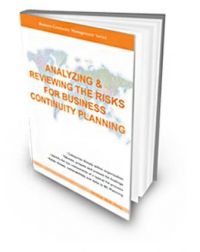Risk Evaluation: Difference between revisions
Jump to navigation
Jump to search
No edit summary |
(No difference)
|
Latest revision as of 14:29, 30 October 2020
1. Risk Evaluation is the process used to compare the estimated risk against the given risk criteria so as to determine the significance of the risk.
 Note: Risk evaluation may be used to assist in the decision to risk treatment. Related Terms: Risk Appetite, Risk Likelihood, Risk Impact, Risk Rating, Risk Assessment, Risk Level, Period of Disruption


| ||||||||||||||||||||||
2. Process of comparing the results of risk analysis (2.21) with risk criteria (2.22) to determine whether the risk (2.1) and/or its magnitude is acceptable or tolerable

Notes (1) : Risk evaluation assists in the decision about risk treatment (2.25).
[ISO Guide 73:2009, definition 3.7.1]
(Source: ISO 31000:2009 – Risk Management — Principles and Guidelines) - clause 2.24
| 3. The process of determining the significance of risk.
(Source: ENISA - the European Network and Information Security Agency. BCM & Resilience Glossary) |
